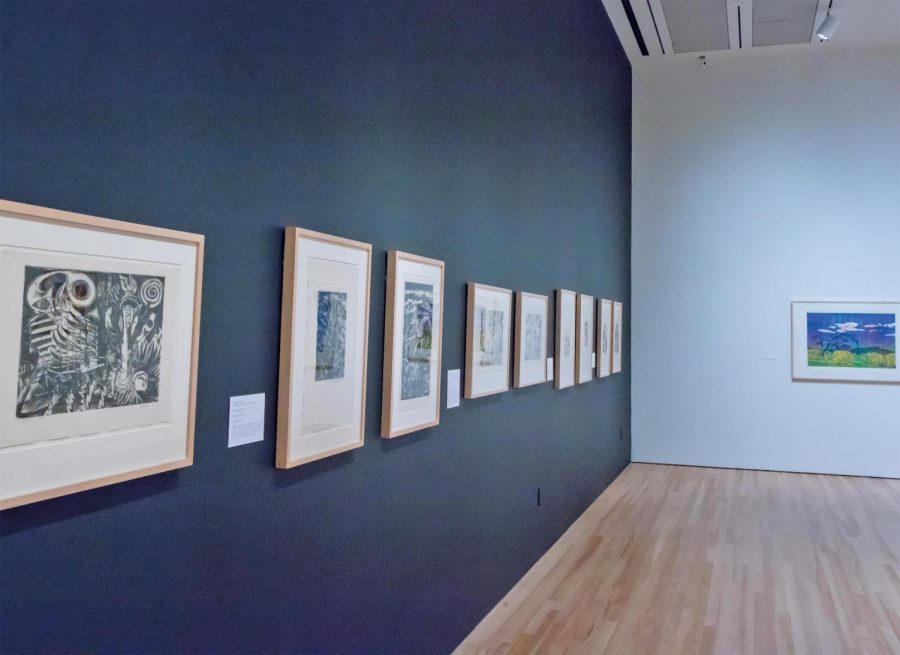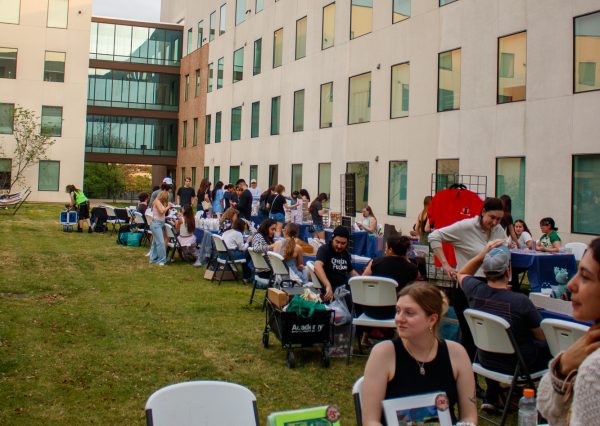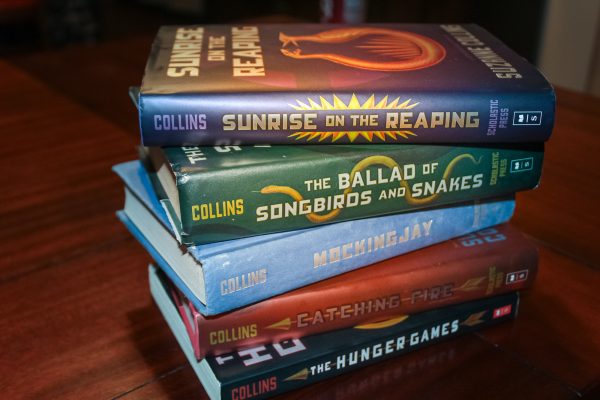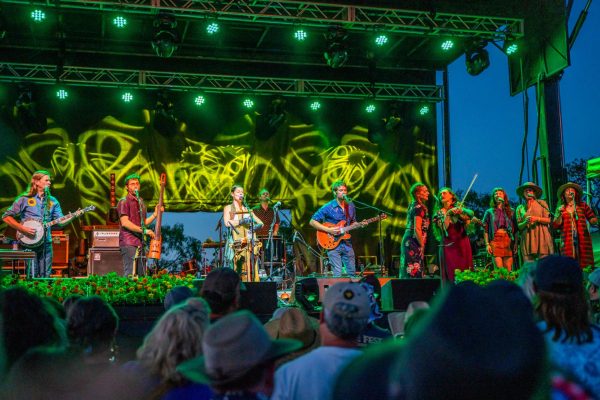‘Arte Sin Fronteras’ brings Los Angeles-based Latinx art display to the Blanton
‘Arte Sin Fronteras’ is an exhibit that brings the art of Self Help Graphics and Art from Los Angeles to Austin. The exhibit is on display until Jan. 12.
Various screenprints in vibrant colors stand in stark contrast to the white walls of the Blanton Museum of Art. The pieces spawn from a group of artists called Self Help and compose a new exhibit at the Blanton titled “Arte Sin Fronteras,” which translates to “Art Without Borders.”
Founded in 1972, the studio of Self Help Graphics and Art served to empower the Latinx population on Los Angeles’ east side. Franciscan nun and artist Karen Boccalero and Mexican-born artists Carlo Bueno and Antonio Ibanez created the group in response to the lack of youth art education in the area.
The group began by driving a van filled with art supplies called the Barrio Mobile Art Studio around to senior centers, schools, libraries, parks and restaurants in the area. They would distribute supplies and teach those interested.
The group’s signature style took hold when the Experimental Atelier Program was developed. This program allowed local artists to train with master screen printers, giving rise to the vibrant, experimental screen prints which make up the exhibit. The new program also helped to raise money for Latinx artists and community programs as well as encouraged a market for Latinx art.
One of the main goals of the Self Help group was to establish a distinct identity for their community through screenprints.
The first section of the exhibit shows how the artists chose different objects and scenes to represent their culture. Most of the prints represent everyday scenes such as a living room with someone’s shoes kicked off on the floor or a breakfast of conchas, a traditional Mexican pastry. However, the prints are stylized in an almost Saturday-morning-cartoon fashion, separating the pieces from other still lifes. The colors and imagery evoke a childhood nostalgia. I spent a couple minutes getting lost in the simplicity of the pieces.
“Collectively, these prints reflect cultural identities that are complex, at times even contradictory, but most often fluid, adaptable and inclusive,” the wall text explains.
Some of the artists featured explore their struggle for equality as women or as members of the LGBTQ community. Many prints use a darker color scheme when the subject matter is heavier. One particularly striking piece serves as a tribute to an artist who died from AIDS-related complications.
The next portion of the exhibit features art highlighting and protesting injustices committed against immigrants by U.S. Border Patrol. The pieces use symbolic imagery to depict the horrors that border crossing can involve. Wolves represent Border Patrol in multiple paintings, and many stereotypically American symbols such as the Marlboro logo, George Washington, and the American flag represent violence and oppression. This section effectively conveys the sense of desperation and dread felt by many immigrants, and I was deeply moved when viewing the pieces. The pieces ask the viewer to truly reflect on the practice of border enforcement and its consequences.
The final section of the exhibit contains pieces representing the intersection of indigenous peoples’ religious beliefs with Christianity. All pieces represent a deity of the Meso-American people or of Christians. These pieces require a certain religious reverence when viewing that was not present in the rest of the exhibit. This section is also composed of the most visually striking pieces in the whole exhibit.
“Arte Sin Fronteras” is a beautiful and moving representation of the Latinx experience in Los Angeles over the past half-century, making it a must-see.

Hi! I'm Ben Cardillo, I will be graduating this May with a major in Writing and Rhetoric and a minor in Photography. I grew up in Tampa, FL (go Bucs),...







